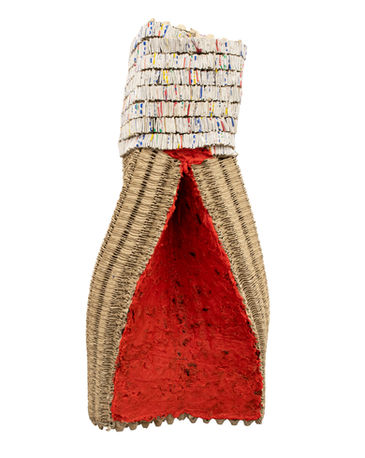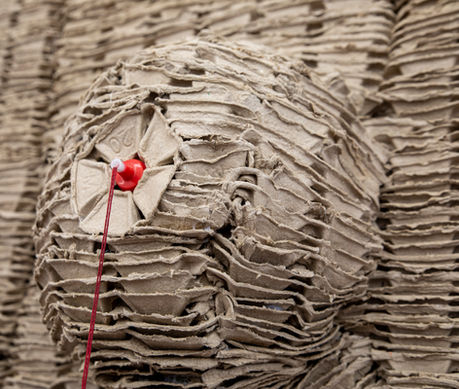top of page
The Armory Show | 2022 | Solo Booth S2
WALLEN MAPONDERA
08-09-22 - 11-09-22
Wallen Mapondera’s interventions into his mediums mark his process in representing human desire to affect social change in the face of crippling hyperinflation, unemployment and poverty in Zimbabwe, his home country. His materials are most often sourced from the remnants of basic-needs commerce; objects that were once used, handled and later discarded. Mapondera’s reclamation of these throw-aways through care and meticulous craftsmanship speaks to an acute understanding of human aspirations towards stability and safety during times of uncertainty.
The image of the collar has both positive and negative associations for the artist, but in most cases it conjures up images of authority and subservience, whether on the neck of a priest or the neck of a dog. Through this body of work, Mapondera asks himself the question “Which side of the leash am I on?”, and turns the focus toward himself and his own exploration of self-mastery, in order to better understand the social structures playing out around him. This question arises in Mapondera’s experiences of Zimbabwean commerce which have been reshaped by colonialism, poverty and hyper-inflation. The term “The Customer Is King” is commonly heard in its various iterations throughout the world, and speaks specifically to the ‘murungu’, or the ‘white person’ within the Zimbabwean context - reflecting the mental colonialism still rife within the artist’s community.
Mapondera sees his materials as a continuation of what came before, and his method of mending, reshaping and nurturing acts as a survival tactic: a symbolic gesture of the gradual rebuilding taking place in his country and in his personal life, as well as a reflection on his own relationship to labour and commerce as a means to survival, highlighting the value in the correlation between time, labour and resources.
Process is elemental to Mapondera’s practice. The reaped floor dust of works such as Simba Mukaka Unosinina reflects his movement and actions inside of his studio, since it is stripped directly from his studio floor, like a print. The artist sees this dust as his studio’s sweat. His studio is his partner, labouring alongside him, and Mapondera understands labour. It is the labour of his mother, a cross-border trader, which inspired his use of woven polythene sacks, synonymous in Southern Africa with back- breaking bulk. His mother’s labour was a collar - an action brought about not by choice but by necessity to feed, clothe and look after those under her care. The arduous nature of this labour is also reflected in the palm tree seeds used in Madhoiri, which take a minimum of 100 days to germinate and have a germination rate of only 20%. Just as the palm tree seeds require a huge amount of effort to reap little reward, his mother’s constant strenuous labour saw little recompense.
In many ways, Mapondera excavates meaning from found objects, staging a return to home by unearthing the objects’ history. This body of work is no exception, as Mapondera returns to one of his most utilised mediums: the egg carton. This object, made from cardboard to house fragile eggs, represents the beginning and end of life - they are the remainders of commerce, created to store and protect, but then discarded, only to be picked up by Mapondera and given new life.
08-09-22 - 11-09-22
Javits Centre,
New York City, USA
SOLO SECTION
BOOTH S2
























VISIT
bottom of page








